Ledberg Stone (Ledbergsstenen) With Magic Formula Dated To Viking-Era – One Of Most Beautiful Landmarks
A. Sutherland - AncientPages.com - The Ledberg Stone (Ledbergsstenen) is considered one of Sweden's most beautiful Runestones. This landmark is also one of the country's more familiar runestones due to its beautiful and imaginative adornment. Some parts of its motif are taken from the famous religious myth of Ragnarök, the final battle in Norse mythology, in which several gods meet their death.
The Ledberg Stone (Ledbergsstenen) is considered one of Sweden's most beautiful Runestones. Image credit: Olof Ekström 2004-12-31. Transferred by Maksim (to commons) - CC BY-SA 3.0
Among other depictions on the stone, there is Fenrir (the Wolf) - the oldest of three terrible children of Loki, according to the literary works Poetic Edda (the Icelandic medieval manuscript known as the Codex Regius) and Snorri Sturluson's Prose Edda, and Heimskringla.
The Ledberg Stone - commonly dated to the 11th century - stands at Ledberg church, close to Ledberg Hill, Östergötland's largest burial mound.
The stone's unique ornamentation also depicts god Odin devoured by Fenrir when the whole world falls.
It is difficult to say if it is the Ragnarok drama that the ancient artists wanted to illustrate on this remarkable runestone. Still, there are certain similarities between the carved images and the events described in the legend of Ragnarok.
The runestone was built into the wall in Ledberg's old church for a couple of hundred years. It is not exactly known where the stone was initially erected.
However, the church was demolished in the 1850s, and the stone had to be removed.
On the front side of the stone, there are two helmet-adorned Viking warriors. One is depicted with a sword, spear, and shield, and the other only with a shield. On the front are also two animals and a ship.
Also, on the opposite side is the depiction of two warriors, but without weapons. Between these warriors, there is an animal. The figures have been interpreted as a representation of Ragnarok. According to this interpretation, The warrior is the god Odin who - on the stone's front side, is getting ready for battle, and then he encounters the ship Naglfar, which, according to legend, is manned by all the creatures of evil, and carries demonic forces to Ragnarok.
This great Norse story continues - through images - on the back of the Ledberg Stone, showing Odin attacked by the Fenris beast. Odin is defeated, and the great Battle is finally over.
As we find in "The Symbolism of Plants: The Gods of the Germanic Peoples," Volume 45, Volume 45, by Harry Eilenstein, on the Ledberg Stone is written:
"Square hole... his father, the two of them, Bise and Gunna (raised the stone)."
"On this runestone, which was built about 1050 for the name "Thorgautr," you can find a very special inscription (carved in the Younger futhark) with a magic formula.
The following three words are:
Thistle mistletoe kiste
That gives the sentence or, more precisely, the picture: "A thistle and a mistletoe in a box."
Why Were These Runes Important?
These runes would protect the stone from impact. This magic formula contains three magic words:
In ancient Norse beliefs, people believed that these words had magical properties. The same magic spell was discovered on many stones in the Nordic countries.
The Ledberg Stone is carved on three sides. Its third side is covered with the carving of a cross. It is dated to the 11th century.
Written by – A. Sutherland - AncientPages.com Senior Staff Writer
Copyright © AncientPages.com All rights reserved. This material may not be published, broadcast, rewritten or redistributed in whole or part without the express written permission of AncientPages.com
More From Ancient Pages
-
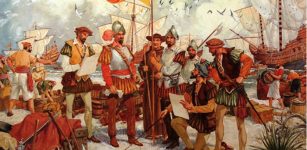 Luna Settlement: First Multi-Year European Settlement Identified In Pensacola, Florida
Archaeology | Dec 26, 2015
Luna Settlement: First Multi-Year European Settlement Identified In Pensacola, Florida
Archaeology | Dec 26, 2015 -
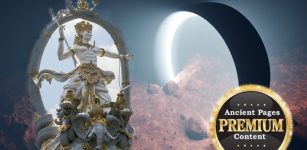 Strange Ancient Abduction Case And Mysterious Journey To A Snake King’s Palace In A Parallel World
Featured Stories | May 1, 2021
Strange Ancient Abduction Case And Mysterious Journey To A Snake King’s Palace In A Parallel World
Featured Stories | May 1, 2021 -
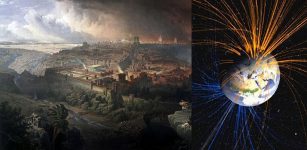 Ruins Of Ancient Jerusalem Shed New Light On Earth’s Magnetic Field’s Behavior
Ancient Symbols | Aug 11, 2020
Ruins Of Ancient Jerusalem Shed New Light On Earth’s Magnetic Field’s Behavior
Ancient Symbols | Aug 11, 2020 -
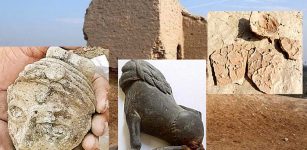 Buddhist ‘Dillu Roy’ Resembles Mohenjo Daro And Harappa And Now Unveils Its Ancient Secrets
Archaeology | Aug 25, 2020
Buddhist ‘Dillu Roy’ Resembles Mohenjo Daro And Harappa And Now Unveils Its Ancient Secrets
Archaeology | Aug 25, 2020 -
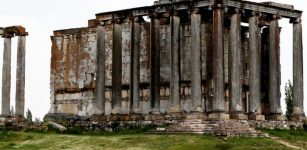 Ancient City Of Aizanoi: Statue Heads Of Greek Gods Unearthed In Excavations
Archaeology | Nov 23, 2021
Ancient City Of Aizanoi: Statue Heads Of Greek Gods Unearthed In Excavations
Archaeology | Nov 23, 2021 -
 Excavations In Keezhadi, Tamil Nadu, India Shed Light On Life During Sangam Age
Artifacts | Aug 24, 2015
Excavations In Keezhadi, Tamil Nadu, India Shed Light On Life During Sangam Age
Artifacts | Aug 24, 2015 -
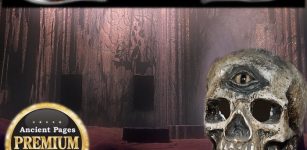 Ancient Bizarre Experiments Conducted In Mysterious Underground Temple
Featured Stories | Jun 28, 2018
Ancient Bizarre Experiments Conducted In Mysterious Underground Temple
Featured Stories | Jun 28, 2018 -
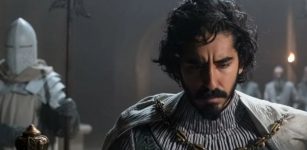 The Green Knight – New Movie Based On Arthurian Legend
Myths & Legends | Aug 7, 2021
The Green Knight – New Movie Based On Arthurian Legend
Myths & Legends | Aug 7, 2021 -
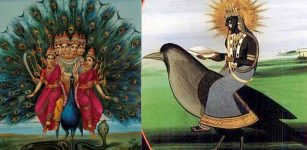 Vahanas – Sacred Animal Vehicles Of Hindu Gods And Goddesses
Featured Stories | Apr 30, 2017
Vahanas – Sacred Animal Vehicles Of Hindu Gods And Goddesses
Featured Stories | Apr 30, 2017 -
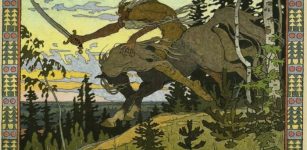 Koshchey ‘The Immortal’: Strong And Wise Ruler Of Darkness In Slavic Mythology
Featured Stories | Jul 3, 2016
Koshchey ‘The Immortal’: Strong And Wise Ruler Of Darkness In Slavic Mythology
Featured Stories | Jul 3, 2016 -
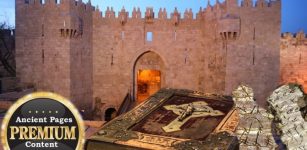 Mysterious Ancient Inscriptions Never Meant To Be Read – Biblical Secrets Revealed
Artifacts | May 17, 2018
Mysterious Ancient Inscriptions Never Meant To Be Read – Biblical Secrets Revealed
Artifacts | May 17, 2018 -
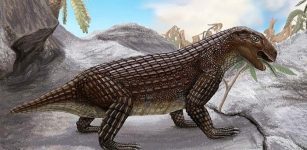 Surprisingly Complex History Of Crocodiles – New Study
Evolution | Nov 23, 2023
Surprisingly Complex History Of Crocodiles – New Study
Evolution | Nov 23, 2023 -
 Men Are Slowly Losing Their Y Chromosome – Is The Future Of Humanity In Danger?
Featured Stories | Nov 7, 2023
Men Are Slowly Losing Their Y Chromosome – Is The Future Of Humanity In Danger?
Featured Stories | Nov 7, 2023 -
 Rare Ancient Clothes And Shoes Found Under The Ice At The Lost Lendbreen Mountain Pass
Featured Stories | Feb 9, 2023
Rare Ancient Clothes And Shoes Found Under The Ice At The Lost Lendbreen Mountain Pass
Featured Stories | Feb 9, 2023 -
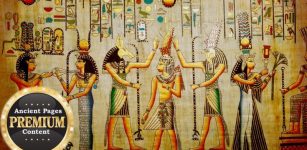 Was Ancient Egyptian Science Inherited From A Lost Atlantean Civilization?
Civilizations | Sep 4, 2017
Was Ancient Egyptian Science Inherited From A Lost Atlantean Civilization?
Civilizations | Sep 4, 2017 -
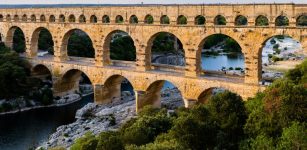 Aqueducts Are Among Most Exceptional Achievements Of Ancient Roman Engineers
Ancient Technology | Apr 10, 2019
Aqueducts Are Among Most Exceptional Achievements Of Ancient Roman Engineers
Ancient Technology | Apr 10, 2019 -
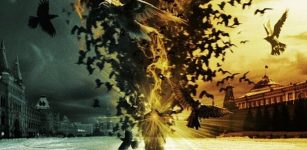 Fascinating Slavic Mythology Offers Surprising Insight Into The Mystery Of Reincarnation
Featured Stories | Oct 13, 2015
Fascinating Slavic Mythology Offers Surprising Insight Into The Mystery Of Reincarnation
Featured Stories | Oct 13, 2015 -
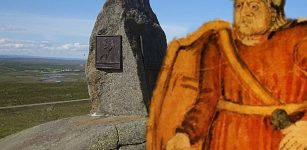 Why Was Grette The Strong, Icelandic Poet And Warrior Afraid Of Darkness?
Featured Stories | Sep 30, 2023
Why Was Grette The Strong, Icelandic Poet And Warrior Afraid Of Darkness?
Featured Stories | Sep 30, 2023 -
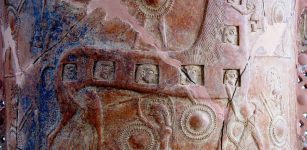 Did The Ancient Trojan Horse Really Exist?
Featured Stories | Aug 19, 2015
Did The Ancient Trojan Horse Really Exist?
Featured Stories | Aug 19, 2015 -
 How The Kimono Became A Symbol Of Oppression In Some Parts Of Asia
Featured Stories | Sep 17, 2022
How The Kimono Became A Symbol Of Oppression In Some Parts Of Asia
Featured Stories | Sep 17, 2022

